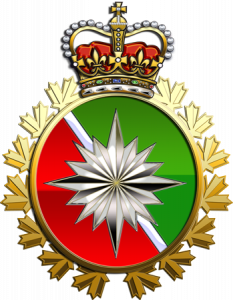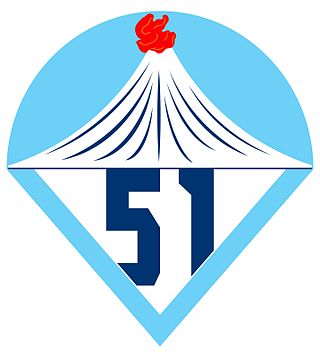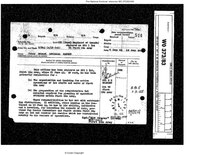
Operation Jubilee or the Dieppe Raid was an Allied amphibious attack on the German-occupied port of Dieppe in northern France, during the Second World War. Over 6,050 infantry, predominantly Canadian, supported by a regiment of tanks, were put ashore from a naval force operating under protection of Royal Air Force (RAF) fighters.

The 2nd Canadian Division, an infantry division of the Canadian Army, was mobilized for war service on 1 September 1939 at the outset of World War II. Adopting the designation of the 2nd Canadian Division, it was initially composed of volunteers within brigades established along regional lines, though a halt in recruitment in the early months of the war caused a delay in the formation of brigade and divisional headquarters. With questions concerning overseas deployment resolved, the division's respective commands were formed in May and June 1940, and at British Prime Minister Winston Churchill's request, the division was deployed to the United Kingdom between 1 August and 25 December 1940, forming part of the Canadian Corps.

Lieutenant General Eedson Louis Millard "Tommy" Burns, was a senior officer of the Canadian Army and a diplomat. He saw active service in both World War I and World War II. He served as the first commander of the first United Nations peacekeeping force in 1956. His military career in war has, for the most part, been criticised by some historians as showing he was "simply incapable of commanding a higher formation."

General Walter Bedell "Beetle" Smith was a senior officer of the United States Army who served as General Dwight D. Eisenhower's chief of staff at Allied Forces Headquarters (AFHQ) during the Tunisia Campaign and the Allied invasion of Italy in 1943, during World War II. He was Eisenhower's chief of staff at the Supreme Headquarters Allied Expeditionary Force (SHAEF) in the campaign in Western Europe from 1944 to 1945.
Operation Jubilee was the Allied code name for the raid at Dieppe on the French coast on August 19, 1942. The following order of battle lists the significant military units that participated in the battle, or were available as reserve.

A military staff or general staff is a group of officers, enlisted and civilian staff who serve the commander of a division or other large military unit in their command and control role through planning, analysis, and information gathering, as well as by relaying, coordinating, and supervising the execution of their plans and orders, especially in case of multiple simultaneous and rapidly changing complex operations. They are organised into functional groups such as administration, logistics, operations, intelligence, training, etc. They provide multi-directional flow of information between a commanding officer, subordinate military units and other stakeholders. A centralised general staff results in tighter top-down control but requires larger staff at headquarters (HQ) and reduces accuracy of orientation of field operations, whereas a decentralised general staff results in enhanced situational focus, personal initiative, speed of localised action, OODA loop, and improved accuracy of orientation.

General Henry Duncan Graham Crerar was a senior officer of the Canadian Army who became the country's senior field commander in the Second World War as commander of the First Canadian Army in the campaign in North West Europe in 1944–1945. A graduate of the Royal Military College of Canada, in Kingston, Ontario, Crerar was commissioned as a lieutenant in the Non-Permanent Active Militia in 1909, serving with the 4th Battery, Canadian Field Artillery, which was based in Hamilton, Ontario. He rose to the rank of lieutenant-colonel in the artillery in the First World War, during which he was mentioned in despatches and made a member of the Distinguished Service Order (DSO). Electing to remain in the army as a professional soldier after the war, he attended the Staff College, Camberley, from 1923 to 1924, and the Imperial Defence College in 1934. He was appointed Director of Military Operations & Military Intelligence in 1935 and Commandant of the Royal Military College of Canada in 1939.

2 Intelligence Company is a Canadian Armed Forces Primary Reserve Intelligence Branch unit based in Toronto, headquartered at Denison Armoury. It is part of the 4th Canadian Division. The Intelligence Officers and Operators of the unit reside in the Greater Toronto Area, work as professionals in the business community and are also active in numerous community service organizations. They deploy on domestic and foreign operations, and are primarily responsible for tactical, or combat intelligence. Recent deployments include to Cyprus, Bosnia, Afghanistan, Kuwait, and Canada.

Lieutenant-General Guy Granville Simonds, was a senior Canadian Army officer who served with distinction during World War II. Acknowledged by many military historians and senior commanders, among them Sir Max Hastings and Field Marshal Sir Bernard Montgomery, as one of the best Canadian generals of the war, Simonds, after serving the first few years of the Second World War mainly as a staff officer, commanded the 1st Canadian Infantry Division with distinction in Sicily and Italy from July 1943 until January 1944, and later II Canadian Corps during the Battle of Normandy from June−August 1944 and throughout the subsequent campaign in Western Europe from 1944, towards the end of which he temporarily commanded the First Canadian Army during the Battle of the Scheldt, until victory in Europe Day in May 1945. The historian J. L. Granatstein states the following about Simonds: "No Canadian commander rose higher and faster in the Second World War, and none did as well in action. Simonds owed his success wholly to his own abilities and efforts—and those of the men who served under him."

General Sir Miles Christopher Dempsey, was a senior British Army officer who served in both world wars. During the Second World War he commanded the Second Army in north west Europe. A highly professional career soldier who made his reputation in active service, Dempsey was highly thought of by both his subordinates and superiors, most notably Bernard Montgomery, but is not well known.

The Lorne Scots is a Primary Reserve infantry regiment of the Canadian Army. It is part of the 4th Canadian Division's 32 Canadian Brigade Group.

The Intelligence Branch is a personnel branch of the Canadian Forces (CF) that is concerned with providing relevant and correct information to enable commanders to make decisions.

The Canadian Intelligence Corps is an administrative corps of the Canadian Army (CA); it includes all CA members of the Canadian Armed Forces' Intelligence Branch. Prior to the Unification of the Canadian Armed Forces in 1968, it enjoyed the same status as an administrative corps of the Canadian Army. The C Int C was never disbanded; however, it was effectively reduced to nil strength at Unification, and entered an administrative hibernation with its personnel and duties assigned to the new Security Branch. The Intelligence Branch was separated from the Security Branch in 1981. In December 2016 the C Int C title was restored by the Chief of the Defence Staff (Canada) within the construct of the Intelligence Branch.

Major General John Hamilton "Ham" Roberts was a Canadian Army officer who served in both of the world wars.
Battle of Chosin Reservoir order of battle is a list of the significant units that fought in the Battle of Chosin Reservoir between November 27, 1950 and December 13, 1950.

The First Canadian Army was a field army and a formation of the Canadian Army in World War II in which most Canadian elements serving in North-West Europe were assigned. It served on the Western Front from July 1944 until May 1945.

The 61st Division of the Philippine Army was an infantry division from the 1930s to 1942.

The 51st Infantry Division was a division of the Philippine Army under the United States Army Forces in the Far East (USAFFE).

The 81st Infantry Division was a reserve division of the Philippine Army under the United States Army Forces in the Far East (USAFFE). It was established in the prewar period and fought 1941–1942.

The 91st Infantry Division was a division of the Philippine Army under the United States Army Forces in the Far East (USAFFE).




















